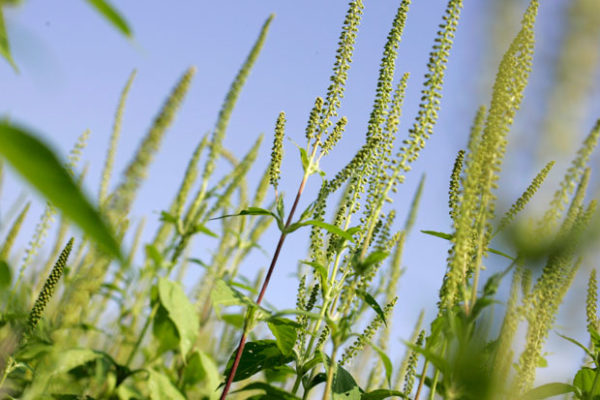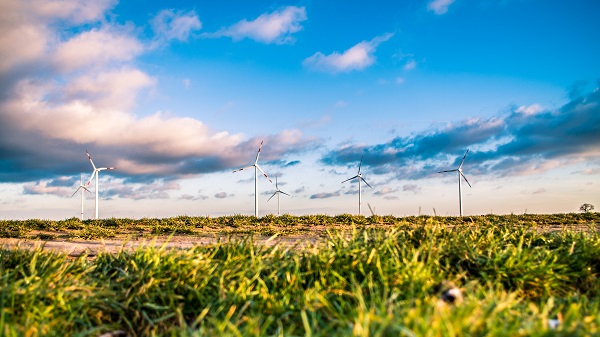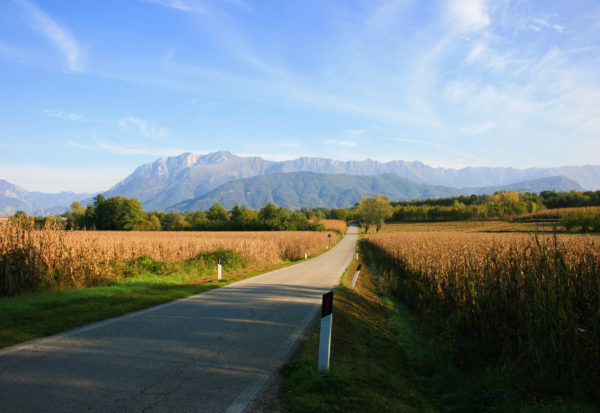Millions of Americans suffer from seasonal allergies. The most common fall allergen, ragweed, is stronger than ever this fall.
Itchy eyes, scratchy throats, and a runny nose become more and more common throughout homes, offices, and schools this time of year. While many attribute these symptoms to a cold, it’s more likely due to seasonal allergies. While experts predict this fall to be a particularly bad ragweed season, many allergy sufferers are already feeling the miserable effects of ragweed pollen in the air.
What is Ragweed Pollen?

The ragweed plant, which grows from August to November throughout most of the US, has small flowers and produces an incredibly high amount of fine-powder pollen, about a million tiny grains per plant every day. These tiny pollen grains are so light that they can travel up to 400 miles by wind. Most prevalent in the Midwest and Eastern US, ragweed can be found in fields, yards, gardens, and roadsides.
Ragweed Allergy

Ragweed pollen usually peaks in mid-September, causing about a month of incredibly miserable allergy symptoms. More commonly known as hay fever, allergy to ragweed pollen typically results in the following symptoms: sneezing, nasal congestion, irritated eyes, itchy throat, headaches, and a runny nose. Some allergy sufferers may experience these symptoms for months after the typical blooming season. The American College of Allergy, Asthma & Immunology (ACAAI) estimates that 23 million Americans suffer from hay fever.
Hay fever is so prevalent because the plant pollinates by wind, not by insects. Any time the wind picks up, the fine-powder pollen gets picked up from the plant and travels, for hundreds of miles at times.
Prepare for a Bad Allergy Season

As if allergies aren’t bad enough already, experts are predicting this fall to be the worst season for ragweed allergies ever. Researchers in Europe predict warming temperatures will lead to an extended ragweed season with increased pollen potency. Higher levels of carbon dioxide from energy production and transportation will allow these weeds to thrive and grow bigger than ever before with more concentrated pollen counts. The research estimates that the number of people suffering from hay fever could double over the next 35 years. While the research looks at air quality trends and pollen counts in Europe, these problems are already being observed in the United States.
Folks in the Dallas-Fort Worth area are gearing up for a severe hay fever season: a cooler summer and wetter August has allowed prime conditions for the ragweed plant to grow bigger and stronger than in past years.
Allergists in Moline, Illinois are already seeing signs of a bad allergy season due to a wet summer and dry fall. Heavy summer rains helped the weeds grow faster and dry windy weather transports the pollen.
New Jersey allergy sufferers are experiencing continuous reports of ‘high ragweed pollen’ days for almost a month straight. With a recent heat and humidity wave, mold counts are also starting to spike.
The increase in ragweed is by no means good news, and although there isn’t a cure for allergies, the good news is there are simple preventative measures you can take to help deal with allergies. Whether it’s using an allergy forecast app or running a Venta Air Purifier to clean your indoor air, check out the list we’ve compiled of ways to help you battle through the fall allergy season.
Do you suffer from seasonal allergies? Are you concerned with the reports of increased ragweed pollen this fall? What preventative measures do you take to still enjoy outdoor activities? Let us know in the comments!
